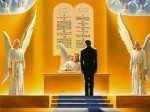Sotapanna is the Pali word for stream entry. We enter the stream by lessening the first three fetters of the ten fetters, i. e., the fetters of 1) sakkaya ditthi, the belief that we are an independent self, i. e., that a self can be found in the five aggregates, 2) doubt about the Buddha and his teachings,… Continue reading Stream Entry Zen Part Two
Category: sakkaya ditthi
Mudita And Zen Always Win
Of the four Brahma Viharas, mudita is the one we find to be a little strange. When we cultivate mudita, we are never envious or jealous of anything. If we cultivate this Brahma Vihara well, we really don’t mind when the home team loses a big game; we’re happy for the people who rooted for… Continue reading Mudita And Zen Always Win
Zen. the Self, and External Objects
People who have never given the teachings of the Buddha a second thought know all about subject and object. They know that cars, trees, bodies of water, the sun and all of that other stuff, including other people, is out there and the subject is the me who lives inside and perceives all that stuff. Jerry… Continue reading Zen. the Self, and External Objects
Zen, Christianity and No Self
The Buddhist doctrine of no self is often misunderstood even by some Buddhists. People with low self esteem are known to embrace it: See, it’s a good thing to have no self! But the doctrine does not mean that the self does not exist. It means that the self that does exist is a… Continue reading Zen, Christianity and No Self
Zen Practice And Enlightenment
The Buddha identified four stages of enlightenment: Stream Entry (sotapanna), the Once Returner (sakadagamin), the Non-Returner (anagamin), and Buddhahood. The Buddha taught that Stream Entry is attained when the first three of the ten fetters are overcome: Those first three fetters are: 1) Belief in an independent, unchangeable/permanent or everlasting self, called atman in the Vedas, which belief… Continue reading Zen Practice And Enlightenment
Zen Practice And Sakkaya Ditthi
Sakkaya ditthi, the wrong view of self, is the first of the ten fetters that bind unenlightened beings. Its counterpart or antidote is Right View or Right Understanding, the first fold of the Eightfold Path. Until we arrive at samma ditthi, the correct view of self, it’s hard to loosen the other nine fetters. Who practices… Continue reading Zen Practice And Sakkaya Ditthi
Zen Practice And Judgement
The famous Bible (Matthew) verse: “Judge not that ye be not judged” has two (2) meanings, I think. The obvious, mundane meaning is that the law of karma (the law of cause and effect) will operate and we will be judged by others if we first judge them. The second, deeper meaning is that the very… Continue reading Zen Practice And Judgement
Empty the cup, Practice Zen
A learned professor once sought out Japanese Zen master Nan-In. He told the master that he was well-read on Zen matters and did not need introductory lessons. He just wanted advanced instruction as to what should be done to attain enlightenment. The master offered the visitor a cup of tea and began pouring tea… Continue reading Empty the cup, Practice Zen
The Zen Bell Tolls For No One
If there is no independent self, what is there? Buddhism teaches that nothing exists independently of anything else. Everything we see, hear, smell, taste or touch is connected to something else. Nothing exists in a vacuum. John Donne’s Meditation XVII, published in 1624, includes the passage made famous by Ernest Hemmingway: No man is an… Continue reading The Zen Bell Tolls For No One
Zen And The Heart Sutra
Nor is there pain or cause of pain or cease in pain or noble path to lead from pain, not even wisdom to attain, attainment too is emptiness. As Red Pine points out in his superb translation and commentary on The Heart Sutra, these lines were penned to directly refute the Four Noble Truths. The… Continue reading Zen And The Heart Sutra









